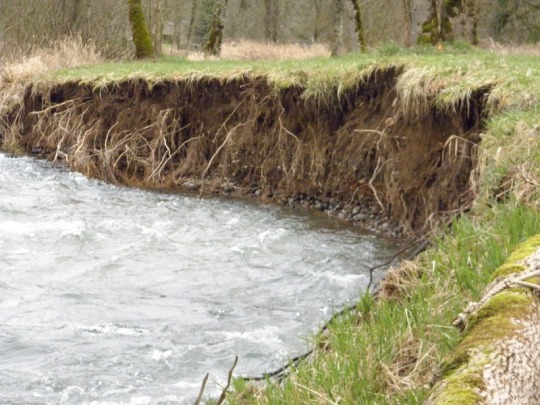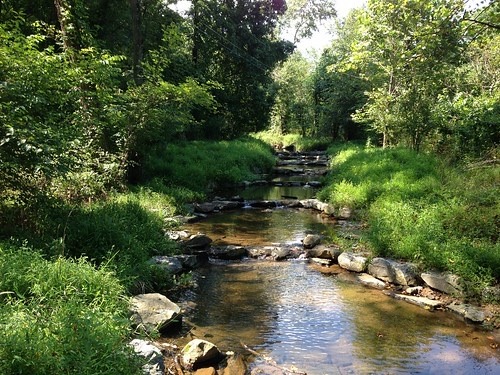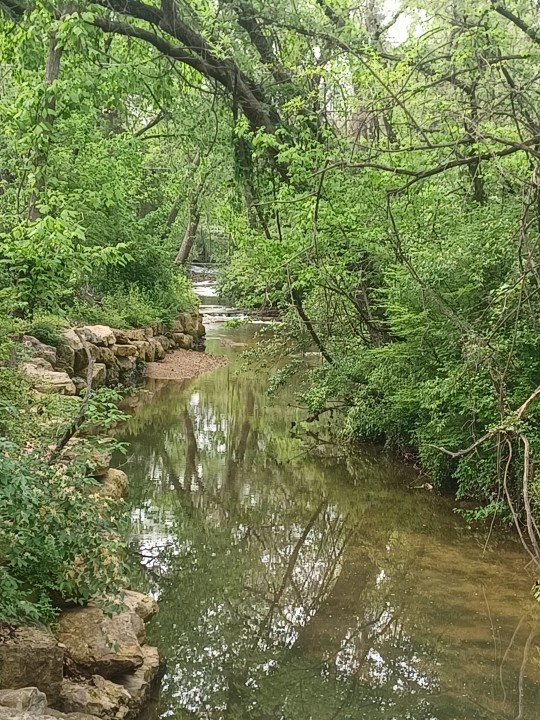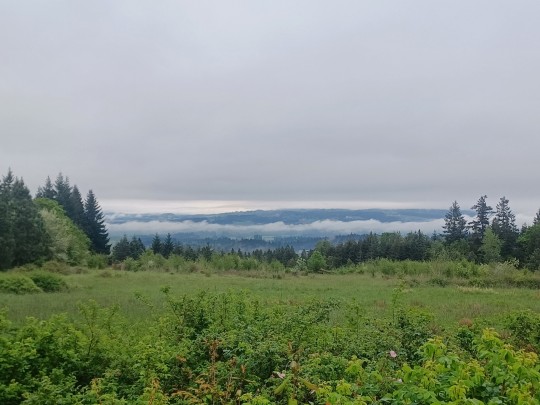#stream ecology
Explore tagged Tumblr posts
Text
It's ok to be cray



(bonus dragonfly nymph)

18 notes
·
View notes
Link
This is awesome! I love the exposure that the BMI (benthic macroinvertebrates) are getting!
Here is some finer taxonomy (based on the images):
1. Perlidae
2. Aeshnidae
3. Neohermes
4. Unsure, but it looks like either Cambaridae or Astacidae
5. Erpobdella
6. Pisciola
Carry on.


I’ve made three of these now and put them on etsy to see how they do. Wash your hands to slowly free rubber creatures one by one. Yes it’s a bit clumsy but it’s more of a novelty bioscience item than completely practical as normal soap. I print a fact sheet out for each one and stick it on the wrapping! Glycerin soap with slight oak moss scent and soap dye.
2K notes
·
View notes
Text

river in mountains. idyllic autumn scenery of carpathian countryside. alpine village. water stream among forest and grassy shore. fence on the river bank. cloudy weather
#river#mountain#forest#landscape#tree#nature#stream#background#grass#scenic#scenery#water#countryside#cloud#autumn#weather#shore#wonderful#carpathian#among#grassy#fence#cloudy#high#field#morning#meadow#sunny#land#ecology
44 notes
·
View notes
Text


Bow In The Clouds, Michigan August 2024
linktree / instagram
#nature#my photography#flowers#summer#forest#woods#woodland#hiking#michigan#puremichigan#wetland#pond#lake#creek#stream#conservation#ecology#pagan#druid#witch
32 notes
·
View notes
Text

Just because I'm traveling doesn't mean I'm traveling alone! I brought all my chapbooks with me along with packing materials, so if you decide you need one (or more), you don't have to wait until I get back home. All my currently available chapbooks are at https://rebeccalexa.com/chapbooks/
#books#nature#chapbooks#self publishing#nature books#nonfiction#creek#stream#trees#foraging#habitat restoration#restoration ecology#birds#wildlife#animals#ecology#environment#science#conservation
22 notes
·
View notes
Text
So we’ve established that Lyon’s an animal nerd. That’s basically canon. You can’t tell me he doesn’t know how to identify birds and spout off fun facts on a whim.
HOWEVER. A few weeks into an ecology course (whooo….gen eds. I am not a science girly) I’ve decided he’d live for that shit. Like trees can communicate about diseases so the other trees can protect themselves from it? Wild. He’d live for that shit. He’s a giant nerd.
#fairy tail#shitpost#lyon vastia#stream of consciousness tbh#ecology is intresting but I just cannot wrap my head around science
19 notes
·
View notes
Text
The Wolf
In 1970, an ecologist named David Mech published a book called “The Wolf: The Ecology and Behavior of an Endangered Species.” A book which catalogued all the information researchers had at the time on the worlds of wolves. A book that Mech himself would later spend the rest of his career trying to end the publication on. You see, Mech had mistakenly used research on wolves that were held in captivity, and found later that much of the assertions made in it did not hold up to scrutiny when observing wolves in the wild.
In the west we’ve heard, often to death, of the “Alpha Wolf.” We compare people to wolves quite a bit. Especially in the recent trend of armchair youtube “sociologists” and american conservative grifters attempting to explain human behavior in terms of so-called “Alphas” and “Betas,” a great many people still believe that humans, by nature, are pack animals with rigid heirarchies. Like the wolves in Mech’s research: The strongest, most fit male eats first while the weaker of the pack get what’s left over. The Alpha leads the pack, makes key decisions for them, and always has first pick of the mate. Mech’s research contained much of the information used to argue this point and it was inaccurate. Mech researched only wolves in captivity, however, when he took to observing wolves in the wild, he quickly realized how this view of captive animals was simply not how free creatures organize. A pack of wolves in the wild is a family; usually, two parent wolves with a litter of puppies. There’s no “Alpha” male, there’s a father. And the weakest pups certainly do not eat last, quite the contrary. This dynamic is more indicative of a community than a heirarchy.
In research such as this, we can infer that animals in captivity adopt new forms of social organization in order to cope with their incredibly narrowed freedom. Often this organization is inherited from the order they were bred from, forcing them to maintain it generation after generation.
Despite this false representation, I actually do believe people are like the wolves in Mech’s book. I believe that we are in captivity. One so coercive that it encourages us to believe in social heirarchies. We organize our worlds around it. We have our bosses, our landowners, our teachers, our leaders. We see each other as rungs of a social ladder to step on in order to make it to the next level. We either live believing we are or can be the “alpha wolf,” or we struggle accepting that we will only eat when it is our turn. And for what? Why allow our choices and passions be squandered by believing we must adhere to rules upheld by those who are superior in title only?
In my neighbors, my friends, my families, I see animals in a cage. I see a polar bear that shuffles back and forth all day in a bored frustration like an animatron. I see a whale with a melancholic song for a mate, though it has no room in its tank for itself let alone another. I see a panda that refuses to mate, lest it doom its child to a life too much like it’s own. I see a wolf that would want nothing more than to sprint as far as its breath can carry it to the far reaches of the forest it calls its home. Wishing only to be stopped, not by the glass of an enclosure, but by the limitations of its own, wild imagination.
We are not ranks in a social order. We are beings whose freedom has been withheld. We crave free community, free association.
"To look at people in capitalist society and conclude that human nature is egoism [greed and selfishness], is like looking at people in a factory where pollution is destroying their lungs and saying that it is human nature to cough," says Andrew Collier.
We are not free, we are captives. And attempting to learn the potential of an enclosure will get us nowhere closer to freedom. We can appreciate those who were able to conquer or cast aside that cage, like Emerson or Thoreau. And we can find a glimmer of light beam into our enclosures from the minds that saw hope beyond the cage, like Goldman or Tolstoy. But until we can learn to band together as the wolves we are and break loose of our captivity, we can never truly be free.
mae
#stream of thoughts#thoughts#journal#journaling#capitalism#anarchism#anarchy#sociology#anti capitalism#freedom#coercivecontrol#anticiv#coercion#control#free association#nature#wolves#ecology#captivity#this swam around my head for weeks and needed to be put somewhere
14 notes
·
View notes
Note
who's the smelt researcher whose lab you applied to?
it took me a moment to remember what you meant because I a) forgot I applied for that & b) forgot I posted about it here lol but it was a mentee program under Anna Medina, a grad student at UAF CFOS. why do you ask?
#someone else got picked obv#I'm doing stable isotope analysis this summer & stream ecology stuff in fall though so oh well it all works out
2 notes
·
View notes
Text
The more you learn about freshwater ecology, the more you will start to hate dams with the fiery passion of a thousand hateful suns
#stop fucking up streams and rivers#you're preventing migration#restricting nutrient flow#killing species#and generally making things worse#freshwater ecology#freshwater biology#ecology#dam
151 notes
·
View notes
Text
the 4 hours of sleep have hit exactly Now
#today was fun#i caught a baby salamamder and fish in the stream during my friends lab that i was allowed to crash!#(im doing research with the professor next year lol) (and its an intro ecology course)#amd work is fun too#but Wow im tired Right Now
5 notes
·
View notes
Text
Do you ever think you’re not meant for this world and would fit so much more easily into the depraved sex horror mutilation novels you’re so fond of
#I’ve been through so much fucked up shit and now I’m just supposed to go to work?#sometimes I feel like I’m on a different plane of reality that only people who have been exposed to horrific things can access#and that’s why it’s so hard to get along with people. like they don’t know what it’s like to suffer#there’s a degree of pain where you turn into an animal . and someone needs to have known that#it’s like we’re entirely different organism like Neanderthals and Homosapiens. same ecological niche but fundamentally not the same#that metaphor will break down if you squint too hard at it#this is very stream of consciousness#but genuinely a lot of my closest relationships throughout my life have been with cult survivors and people who’s parents are murderers#or have survived similar shit that I have. I dated a guy in high school who’s dad shot his grandma while he was asleep in the house#(for those who keep track he’s the one who left his literal nazi fiancé for me . he was a nice enough guy just in a complicated situation)#it’s like we can all speak the same language without sounding like gibberish#I love not phasing people it’s so humiliating when my life is the most horrific thing someone has ever heard of#anyway the novel I finished today was very comforting . to me <3 it felt like a world I’d like to sink into and live in#give it up for auto-amputation
10 notes
·
View notes
Note
I would love to hear your drunk joy about your restoration projects!
Hello hello! Unfortunately all I can offer is sober joy since it is now the next morning. I gave one answer to this over here but I would love to talk to you about stream restorations!
Ok, so simplifying a whole bunch of stuff here…
When rain falls on a forest or other natural area, it gets absorbed by plants or seeps into the ground, and slowly makes its way to water bodies. This is good. When rain falls on roads and buildings it moves pretty fast to the lowest possible point, picking up dirt and pollution along the way. When that lowest point is a stream, this fast-moving water can erode away the stream bank, causing more sediment to get into the stream and scouring the bottom in a vicious cycle that just makes the water flow faster and erode the stream more. Plus fast moving water hangs on to all of the pollutants it picks up along the way because they don’t have time to settle out, so they all get dumped into the big water bodies.

Look at those sad roots hanging out there! Breaks your heart!
What we do is take these beat up, polluted streams, and we engineer ways to slow them down. That usually involves digging a new path that meanders more, putting in stone that won’t be eroded, and re-grading the banks so that they slope gently and are planted with native plants that naturally slow down the water and suck up the nutrients it’s carrying.
Sometimes, where It’s ecologically appropriate, it involves building beaver dam analogues! This is where we take any trees we had to cut down because they were in the way of a good meander or they were an invasive species and pile them up like a beaver would! On one of our recent projects we actually had a beaver move into the structure we built!!! He made some renovations of course but seems to be living there happily!
When we’re done, in addition to creating good natural habitat, we’ve got a whole lot of native plants that are slowing down the water and using the nutrients, and the slower water is dropping its pollution so it’s dispersed and not hurting anything.

I’m resisting the urge to post pictures of my company’s projects because I don’t actually want to dox myself, but this is a good example of a restored stream.
So that’s the other part of what the money from this deal is going to go into!
13 notes
·
View notes
Text


Two beautiful scenes, two very different oak habitats. The first is my childhood creek, rather unceremoniously named "Dutro-Carter Branch", in Rolla, Mo. It runs through mostly badly damaged to completely erased oak-hickory forest, with just a thin veil of habitat on either bank, where it exists at all. The other is Cooper Mountain in Tualitin, OR, where Garry oak savanna and woodland are being restored amid patches of Ponderosa pine and mixed conifer forest. I arrived back in the PNW last Thursday evening after five days of driving and immediately leaped back into teaching the next day. While I've scarcely had time to stop and rest, and the next several days will be similarly busy, I'm glad I get to ground myself in these beautiful, fragmented places in nature.
#oak trees#oak#trees#creek#stream#water#landscape#landscape photography#Ozarks#Missouri#Missouri Ozarks#PNW#Pacific Northwest#Cascadia#habitat restoration#restoration ecology#ecology#nature
21 notes
·
View notes
Text
Breaking News: Nord Stream Bomber Found! It was an Scottish Entity! See the evidence here:

#Nord Strem 2#Ecological Terrorism#Sell your lies to soemone else#Laughing about the Nord Stream 2 lies#We know who bombed our pipeline#Jokes about Joe#Taz#Tageszeitung#Loch Ness Monster
2 notes
·
View notes
Text
Impacts of invasive species on native freshwater populations in the UK
Freshwater habitats are amongst the most vulnerable in the United Kingdom. The anthropological impacts on freshwater environments are disproportionate to those of terrestrial environments as fragmentation, pollution and climate change have greater impact on an already unstable habitat (Eatherly, 2019). As a result, the impacts of invasive species in aquatic environments are greater than those in…

View On WordPress
#conservation#crayfish#defra#ecological#ecology#environment#essay#fishing#freshwater#invasive#marine#native species#natural england#Nature#river#species#stream#wildlife
2 notes
·
View notes
Text
there are six climate tipping points identified in the united nations intergovernmental panel on climate change sixth assessment report. the greenland ice sheet, the west antarctic ice sheet, the atlantic meridional overturning current (amoc, colloquially the gulf stream), the amazon rainforest, and thawing releasing runaway amounts of methane.
greenland's ice sheet is in disequilibrium and we are committed to 2-3 meters of sea level rise from its melt alone in the next 200 years.
greenland's ice sheets have been melting twice as fast in the last twenty years as they were during the previous century.
rapid increase in the rate of melting of the west antarctic ice sheet is unavoidable.
the west antarctic ice sheet is retreating twice as fast as previously predicted.
this is causing the atlantic meridional overturning current to collapse.
the gulf stream is weakening. 99% confidence. measured volume through the florida straits has declined by 4% in the past 40 years.
the gulf stream will collapse between 2025 and 2095. 95% confidence.
the amazon rainforest is currently in a drought that may indicate it has passed its threshold to maintain its own wet climate as a result of deforestation.
nasa finds that tundra releases plumes of methane in the wake of wildfires.
this year eight times more land burned in canada than average.
soil fires in the canadian arctic are burning the peat underground and melting the permafrost. stat from the study 70% of recorded area of arctic peat affected by burning over the past forty years has occurred in the last eight and 30% of it was in 2020 alone.
russian siberia experienced a similarly massive fire season in 2021.
a methane source we weren't expecting was warmer, wetter conditions to increase organic decomposition in tropical wetlands to release ever increasing amounts of methane.
we are sixteen years into an ice age termination event fueled by these tropical methane releases.
the world meteorological organization expects us to break 1.5º C of warming from pre-industrial levels within the next five years..
united nations environmental programme (unep) emissions gap report found that current fossil fuel extraction commitments leave no credible path to keeping warming below 1.5º C. based on current policies we will experience 2.8ºC of warming by 2100. even if all current pledges were implemented and followed through with (which they never have been), we will only be able to limit that to 2.4-2.6ºC of warming.
15,000 scientists warn that society could collapse this century.
we aren't going to have a choice. this is the sixth great extinction.

#dont look away#climate change#climate crisis#climate emergency#extinction rebellion#last generation#just stop oil#there's so much more#ocean acidification#ecosystem collapse#bark beetles#jet stream collapse#coral bleaching#monsoon collapse#groundwater depletion#ecological collapse#wet bulb events#crop failure#it's the end of the world as we know it
11K notes
·
View notes